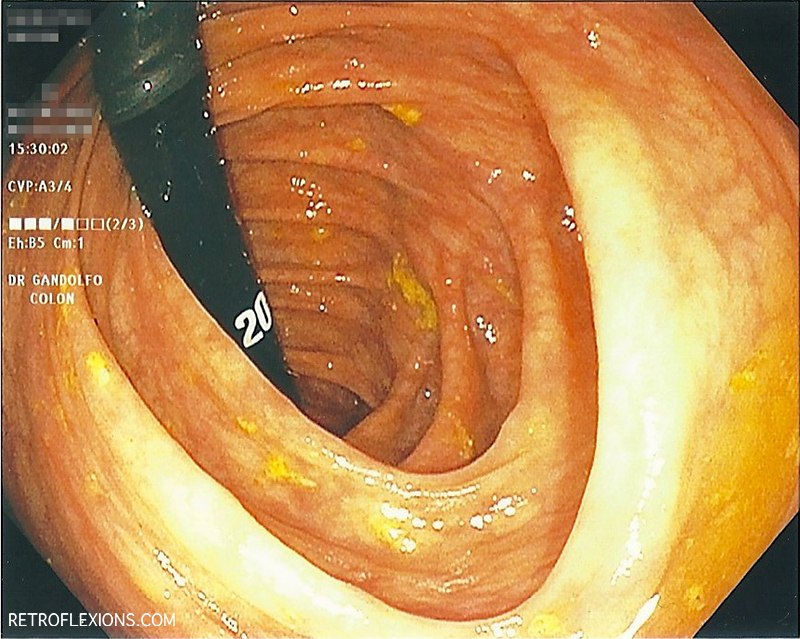Since the name of my site is Retroflexions, it’s about time I wrote an article about how to retroflex! More specifically, how does one retroflex in the right colon? (Fair warning: This article is probably only interesting to gastroenterologists.)
Let’s cover the how part first…and keep in mind it’s actually really simple to do in the right setting. Starting in the proximal ascending colon or cecum:
Step 1: Turn the big wheel all the way up.
Step 2: Turn the little wheel all the way left.
Step 3: Gently and slowly torque the insertion tube counter-clockwise until you feel or see the scope retroflex. Unlike the rectum, you usually don’t need to push scope into the patient to retroflex in the right colon.
Once the tip is turned back on itself, you can gently maneuver the scope to get a better view. This might require inserting the scope a little to get the tip away from the mucosa, or further rotating the insertion tube.
This is a very safe maneuver if done in the right patient. The favorable situation is a straight scope without any loops in the sigmoid colon, a decently large diameter ascending colon, and an otherwise healthy colon (e.g., don’t retroflex in a patient with active colitis, etc.). If the maneuver is not happening easily for whatever reason, or you feel resistance, just stop!
I should also mention how to get out of the retroflexed view and back into the regular forward view: Release the wheels and allow them to return to neutral, then slowly withdraw the scope and allow the retroflexed tip to straighten…it’s easy!
Like any technique, it is a good idea to “practice” this often when the optimal situation presents itself (straight scope in a straight, clean, healthy colon). You never know when you might need this skill to remove a polyp or treat a bleeding site that is otherwise impossible to get to in forward view, and you don’t want to fiddle around with it for the first time in a situation where you really need it to work.
As with most things, knowing how is the easy part. Next time we will cover the more important question of why one would want to retroflex in the right colon. Stay tuned…[Go to part two of the series]
